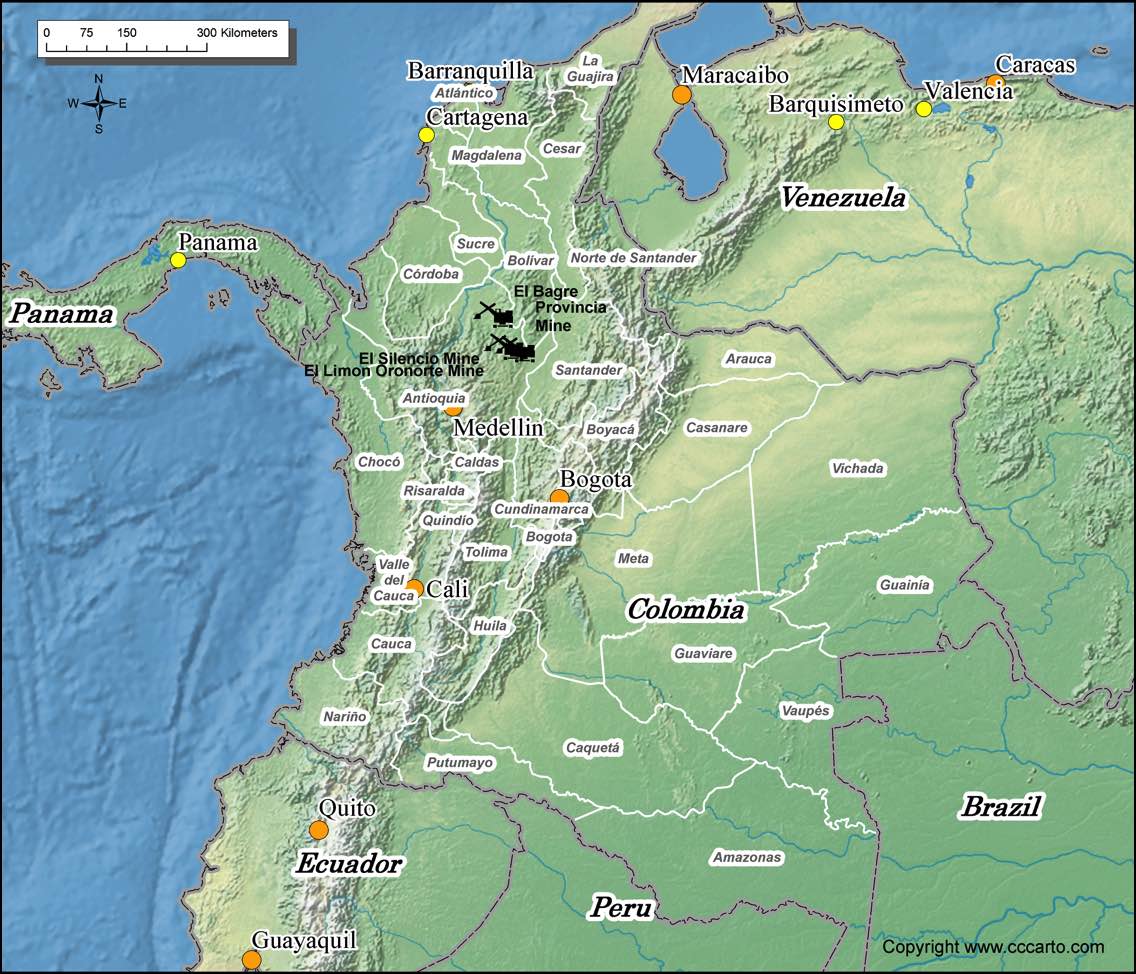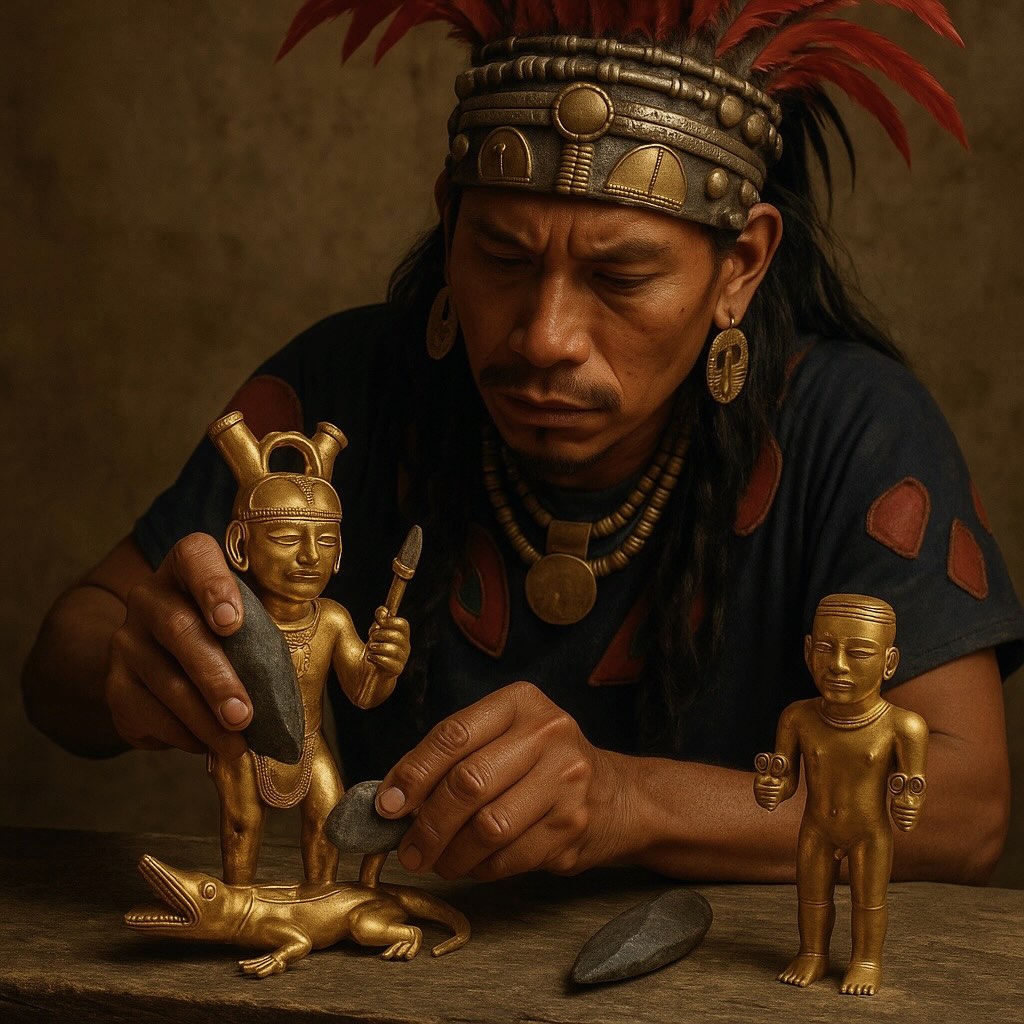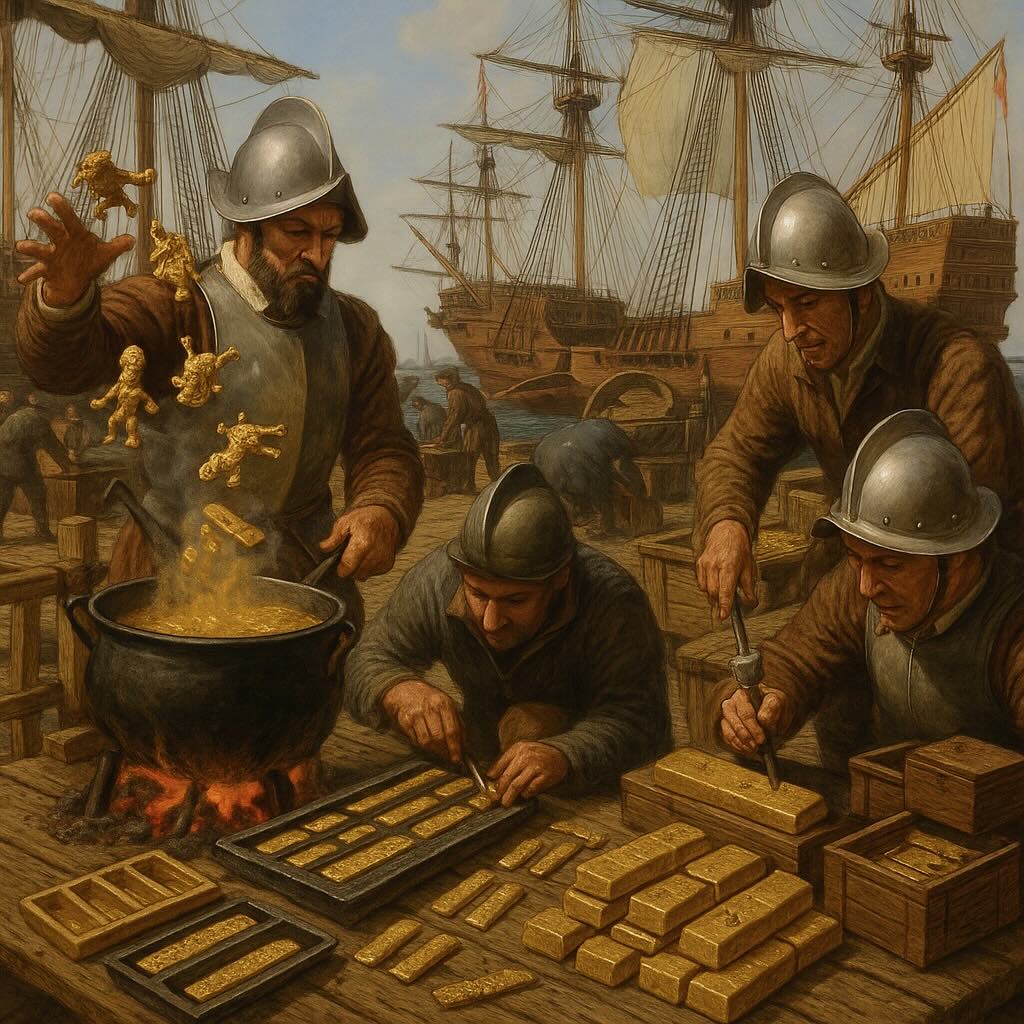
Colombia Goldmines
The History of Gold Mining in Colombia
Gold mining in Colombia has a long and rich history, dating back to the pre-Colombian era when indigenous peoples like the Muisca and the Quimbaya were known to work gold for ceremonial and decorative purposes. These early societies used gold primarily in religious rituals and to craft intricate jewelry, demonstrating advanced metalworking skills long before the arrival of Europeans. The Spanish conquest in the 16th century marked a significant turning point in Colombia's gold mining history. The conquistadors, led by figures like Gonzalo Jiménez de Quesada, who founded Bogotá, were driven by tales of El Dorado, a mythical city of gold. This quest led to the systematic exploitation of Colombia's rich gold resources, with indigenous peoples often enslaved to work in the mines.

Early Gold Mining and Control
Initially, the Spanish crown tightly controlled gold mining through the encomienda system, where conquistadors were granted rights to labor and tribute from indigenous communities in exchange for "protecting" and Christianizing them. This system allowed the Spanish to extract vast quantities of gold, which were then shipped back to Spain, contributing significantly to the wealth of the Spanish Empire. As Colombia became more integrated into the global economy, other European powers and later, multinational corporations, began to exert influence over its gold mining sector. During the 19th and early 20th centuries, British, French, and American companies acquired significant stakes in Colombian gold mines, introducing more industrialized mining methods and increasing production.Major Gold Mining Regions and Types of Gold Found
Colombia's most productive gold mining regions have traditionally been concentrated in the Andean and coastal regions. The department of Antioquia, particularly around the town of Segovia and the city of Medellín, has historically been one of the most prolific gold-producing areas. The region of Chocó, located on the Pacific coast, is also known for its rich placer deposits, where gold is found in alluvial deposits along rivers. In addition, the departments of Caldas, Tolima, and Cauca have also been significant producers of gold. The types of gold found in Colombia vary by region. In Antioquia and Caldas, deep rock mining has produced high-grade gold veins, often in the form of nuggets or gold-bearing quartz. In Chocó, placer mining has yielded fine gold particles mixed with sand and gravel, which are extracted through panning and sluicing.Types of Mining in Colombia
Colombian gold mining has employed a wide range of techniques over the centuries. Early indigenous mining was primarily placer mining, where gold was extracted from riverbeds using simple tools like wooden pans and stone sluices. The Spanish introduced more advanced techniques, including hydraulic mining, where water was used to wash away entire hillsides to expose gold-bearing gravel. Deep rock mining became prominent in the 19th and 20th centuries, particularly in regions like Antioquia, where gold was extracted from underground veins. By-product gold mining, where gold is recovered as a secondary product of other mining activities, particularly silver mining, has also been significant. More recently, modern methods such as cyanide and mercury processes have been employed, especially in larger industrial operations. These chemical processes have allowed for the extraction of gold from low-grade ores, significantly increasing production.Famous Gold Strikes and Rich Veins
Colombia has seen several famous gold strikes and rich veins over the centuries. One of the most significant was the discovery of the Marmato vein in the department of Caldas in the 16th century, which became one of the richest gold mines in the Spanish Empire. In Antioquia, the Segovia vein, discovered in the 19th century, has been one of the most productive in Colombian history, yielding millions of ounces of gold over its long history. The El Bagre gold mine, also in Antioquia, is another famous site, known for its rich deposits of high-purity gold.Gold Mining Towns and Cities
Several Colombian towns and cities owe their origins to the gold mining boom. Medellín, now Colombia's second-largest city, was originally a small mining town in the 17th century before growing into a major commercial center. The town of Segovia in Antioquia is another example, having developed around the gold mining industry in the 19th century. Marmato, in Caldas, is a historic gold mining town that has been continuously mined for over 500 years and remains a significant producer today. Similarly, Quibdó, the capital of Chocó, has been a key hub for placer mining on Colombia's Pacific coast.Gold Sales and the Global Market
Gold mined in Colombia is typically sold through a combination of legal and informal channels. Legally, gold is sold to authorized dealers and refineries within Colombia, who then export it to international markets, often to Switzerland, the United States, and the United Arab Emirates, where it enters the global gold trade. However, Colombia has long struggled with issues of illegal mining and smuggling, with a significant portion of its gold production bypassing official channels and being sold on the black market. This illegal trade is often linked to criminal organizations and has been a significant challenge for the Colombian government.Economic Conditions for Modern Gold Miners
The economic conditions for gold miners in Colombia today vary widely. In large-scale industrial mines operated by multinational corporations, miners typically earn decent wages and have access to better working conditions and safety standards. However, small-scale and artisanal miners, who make up a significant portion of the workforce, often work in precarious conditions, earning low wages and facing significant risks from hazardous working environments. These miners often operate without proper safety equipment, and the use of mercury in artisanal mining poses severe health risks. Despite these challenges, gold mining remains one of the few viable economic activities in many rural areas of Colombia.Gold Coins Minted in Colombia
Throughout its history, Colombia has minted several gold coins, particularly during the Spanish colonial period and the early years of independence. The most famous of these is the "Onza de Oro," a one-ounce gold coin minted during the 18th and 19th centuries. In the modern era, the Banco de la República (Colombia's central bank) has issued commemorative gold coins, often celebrating significant historical events or figures in Colombian history. These coins are highly prized by collectors and investors alike.Environmental Costs of Gold Mining
The environmental impact of gold mining in Colombia has been profound and often devastating. The use of mercury and cyanide in gold extraction has led to widespread contamination of rivers and soil, particularly in regions like Chocó and Antioquia. Deforestation is another major issue, as large areas of rainforest have been cleared to make way for mining operations, leading to habitat destruction and loss of biodiversity. The illegal mining industry has exacerbated these problems, as unregulated operations often ignore environmental regulations and engage in practices that cause significant ecological damage. In some areas, entire landscapes have been altered by mining, leaving behind scarred and polluted environments that are difficult to rehabilitate.Active and Closed Gold Mines
Several gold mines in Colombia have closed over the years, either due to depletion of resources or the environmental and social challenges associated with mining. For example, the Frontino mine in Antioquia, one of the oldest and most productive in Colombia's history, was closed in the early 21st century after more than a century of operation. However, many mines remain active, including the Segovia and Marmato mines, which continue to produce significant quantities of gold. In recent years, there has been a resurgence of interest in Colombia's gold mining sector, driven by high global gold prices and improvements in mining technology, leading to the reopening of some previously closed mines and the development of new ones.Conclusion
Colombia's gold mining history is deeply intertwined with its cultural and economic development, from the indigenous civilizations that first worked gold to the modern multinational corporations that now dominate the industry. While gold mining has brought wealth and growth to certain regions, it has also brought significant challenges, including environmental degradation, social conflict, and economic inequality. As Colombia continues to navigate the complex legacy of its gold mining industry, the challenge will be to balance the economic benefits of gold production with the need to protect the environment and improve the livelihoods of those who depend on mining for their survival.Source: U.S. Geological Survey, Major mineral deposits of the world, Open-File Report 2005-1294. Data portal